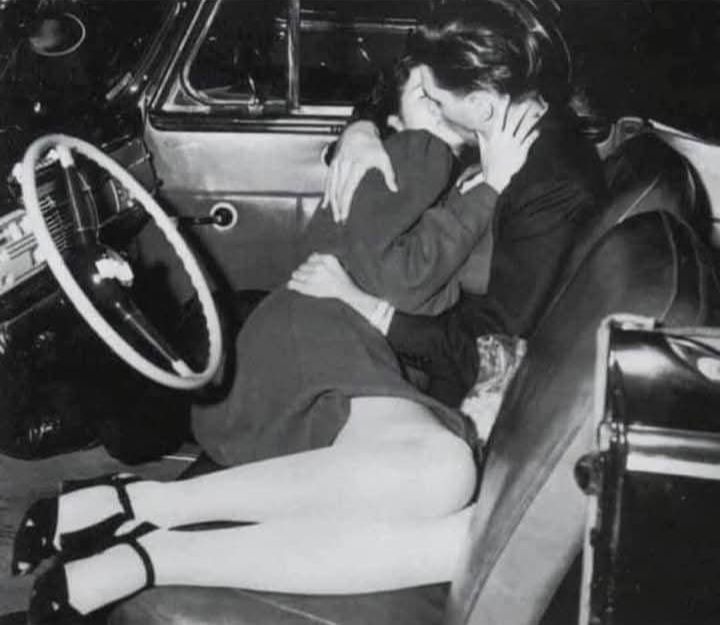This image shows a couple sharing a quiet moment on a front bench seat, a feature that once defined American automobiles. These seats weren’t just functional—they represented closeness and simplicity, allowing families and couples to sit side by side without separation. Over decades, bench seats disappeared, replaced by bucket seats and consoles, but their legacy remains.

Bench seats have roots in early 20th-century car design, inspired by carriage seating. Popular in cars like the Ford Model T and luxury brands, bench seats thrived through the ’30s to ’50s. The ’60s and ’70s were their heyday, with models like the Chevrolet Impala making them iconic. Drivers and passengers enjoyed the freedom and intimacy these seats offered.
Their appeal came from their wide, uninterrupted design, fitting three people comfortably. Without a center console, passengers could shift around easily. Column shifters freed floor space, enhancing comfort. Upholstery ranged from soft cloth to leather, adding to their charm.
Bench seats offered practical benefits. Before strict seat belt laws, they allowed six passengers in a car, perfect for families or groups. Work vehicles favored them for easy movement. On long trips, their spaciousness made them more comfortable than many modern seats.
Changes in safety regulations and consumer preferences in the ’80s led to bench seats’ decline. Three-point seat belts and airbags required new designs. Buyers wanted more personal space and luxury features, while sporty designs favored bucket seats. Center consoles with storage and tech features made bench seats seem outdated.
By the 2000s, bench seats vanished from most cars. The 2013 Chevrolet Impala was the last sedan to offer one. Today, they remain mostly in work trucks and classic cars.
Though rare now, bench seats evoke nostalgia for simpler times when cars were roomy and personal. They remind us of family trips and cozy moments. While cars evolve, the front bench seat holds a special place in automotive history.


